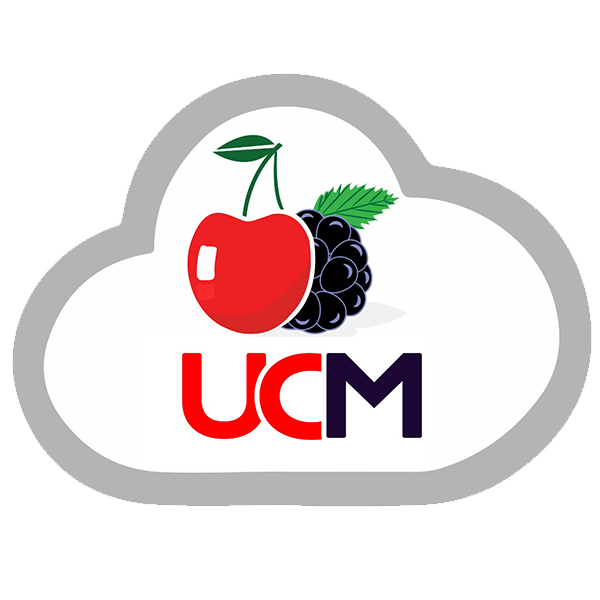Maximizing Customer Outreach: Strategies for Success with Outbound Call Centers
How Can Outbound Call Centers Help You Grow?
Though most of a business’s sales come from existing customers, still reaching new ones is equally important to grow and expand. Today’s tech-savvy generation is overwhelmed with digital marketing therefore companies need to work on a well-planned and personalized outbound calling strategy to grab prospects or lead attention and maintain competitiveness. Partnering with specialized Outbound Call Centers in Lahore can enable enterprises to efficiently achieve their outreach goals and nurture relationships that lead to successful conversions. Let’s delve deep into the basics of outbound services and some important strategies to convert more prospects into paying customers and ultimately improve sales and productivity.
What are Outbound Call Centers & Outbound Calling?
In a typical call center usually two calling actions take place: inbound calling and outbound calling. When customers contact a business to seek guidance, that is inbound calling, and when companies reach out to prospects and customers for sales and marketing that denotes outbound calling. The latter is a proactive way to engage with potential clients and collect customer feedback. Outbound calls play a great role in generating new leads and developing positive customer relationships. Specialized outbound service providers manage all outbound calling operations on your business’s behalf and improve your outreach efforts.
Which Challenges Outbound Services Face?
Inbound services generally need assistance to manage high incoming call volume, maintain high service levels, handle customer inquiries, and ensure customer satisfaction. Conversely, outbound services combat different and unique challenges. As outbound services are sales-oriented, they consistently face low call conversion rates. Moreover, call center administration faces the challenge of managing high outbound call volume, agent performance, technology utilization, excessive agent workload, and burnout. Meanwhile, outdated technology is another reason for low agent performance, especially manual dialing, which wastes agent time. Investing in advanced technology and adopting successful strategies can help tackle these issues.
What are Different Types of Outbound Calling?
- Cold Calls: Call centers place cold calls to prospective customers who have never interacted with your business before, or show interest in your products and services. The main goal of this outbound calling is to introduce your products and services to develop their interest.
- Warm Calls: Some prospects have already shown some interest in your brand offerings by filling out a form, signing up for the newsletter, or attending a webinar. Warm calls are used to contact such prospects.
- Follow-Up Calls: Sales teams make follow-up calls on previous interactions to keep customers engaged or close a sale deal.
- Survey Calls: Sometimes, companies need to collect customer feedback about their product and service experiences. These calls are known as survey calls made to improve the quality of services or get information about market trends.
Which Strategies/Practices Can Increase Customer Outreach?
If you are thinking of a one-size-fits-all solution to make your outbound call center successful, there is nothing like that available. However, implementing these tips and strategies can increase your conversion rates and make your outreach efforts successful.
1. Identify Your Campaign Targets & Set Clear Goals
Before crafting a robust strategy to streamline your outbound calling operations, identify your campaign goals such as sales conversions or lead generation. Also regularly monitor metrics and reassess your goals considering the insights on market shift and performance. For instance, key performance indicators can help you measure your campaign success. The sales team can divide the total calls with successful leads to get ROI. Likewise, companies can collect customer feedback through post-call surveys or reviews to calculate customer satisfaction scores.
2. Enhance Your Agent Confidence By Providing Compelling Script
A well-written script can increase your agent’s confidence allowing them to (AI) provide structured guidance and pre-prepared answers. This will enable them to navigate through conversations smoothly and handle objections efficiently leading to persuasive interactions and improving sales performance. Call centers should keep these key elements in mind while designing good call scripts.
- Start with Compelling Opening: The call center should know that a good sales pitch always starts with a compelling opening that immediately grabs the prospect’s attention.
- Address Objections & Pain Points: Another important thing while creating the body of the script is to manage objections and common pain points. Outbound agents should provide concise and clear answers to typical issues in a personalized manner. This will make customers feel valued.
- Ensure Strong Closing: Design your script that efficiently summarises key points and offers effective follow-up actions.
- Ask Open-Ended Questions: Agents can ask open-ended questions to engage customers through dialogue. This strategy allows agents to gather valuable customer information that helps to tailor the sales pitch.
- Dynamic Scripts: Prospects can raise unexpected objections where providing customized responses can be difficult for agents. Dynamic scripts can help your agents to go with ongoing conversation ensuring natural interaction and increasing the chances of success.
3. Invest in the Advanced Technology
Your sales and marketing teams need advanced solutions like outbound call center software to increase operational performance. This strategy not only improves call connect rates but also increases productivity and allows you to capture more sales opportunities. You should look at the following features in call center software while formulating an outbound calling strategy.
- Conference Calling: Some sales need responses from different decision-makers. Conference calling facilities allow companies to bring all clients together. They can collectively address common issues and improve the decision-making process. This feature is particularly helpful for sensitive sales situations that require input from different departments.
- Auto Dialer: In a typical call center environment, every second matters especially during peak hours. An automated calling system saves your agent time by instantly connecting agents to the next caller after ending the previous call. Your sales and marketing agents can connect with maximum connections in less time and can focus on engaging customers.
4. Facilitate Lead Scoring Based on Facts
Potential customers have different behaviors in terms of purchasing readiness. For instance, some customers are convinced to purchase, while others are never ready to convert. Outbound calling software can assess the prospect’s likelihood of converting and becoming a regular customer. This technology can help your sales teams prioritize promising leads and not save their energy on prospects not ready to buy.
5. Use A Local Number to Improve Call Answer Rate
Sometimes, sales teams contact prospects and customers living in different regions. This leads to a lower answer rate so call centers can fuel their outreach efforts with local number dialing. Thankfully, dialer software offers this feature and automatically matches the area code. It means prospects will see the local phone number on their caller ID increasing the call pick-up chances instead of ignoring or declining. According to a survey, people are more likely to answer the calls made from local numbers. Thus, local number presence is an effective calling strategy to improve call answer rates and lower the call drop rate enabling agents to reach more prospects and increase conversions.
6. Adopt an Omnichannel Approach to Support Outbound Calling
It is almost impossible to remember every single caller in tons of routine cold calls. Lead generation call centers can address this issue by offering multiple touchpoints across different communication platforms. An omnichannel strategy ensures that you are recognized by the callers rather than being treated as an unfamiliar voice. Before calling, you can send a personalized email to introduce yourself and your business. Meanwhile, teams can also engage with prospects on different social media platforms. After the call, they can send follow-up emails summarising your conversation and sharing something useful like a whitepaper or newsletter.
7. Integrate Social Listening To Allow Targeted Conversations
Before initiating outbound calls, sales teams can gain insights about prospective customers using social media tools. For instance, they can track their conversations about your industry, product mentions, and discussions related to competitors. They can identify potential leads discussing related challenges or looking for solutions and create a prospect database based on their recent activities and interests. Likewise, companies can tailor their outbound calling approach by understanding prospect situations and running more targeted campaigns. This will improve your outbound sales call success ratio leading to enhanced customer satisfaction.
8. Take Advantage of the Power Hour Calling Method
Call centers should choose the most effective time for outbound calling. For instance, according to research 04:00 to 05:00 PM is a suitable time slot for cold calling. Likewise, they can also place calls considering customer availability time based on time zone settings because time slot availability can vary based on the target audience and industry. Sales teams can also experiment with different time slots and determine power hours to use as an effective outbound calling strategy. Meanwhile, they can prepare a list of high-value prospects to contact at this hour. Once the power hour ends, review the performance and analyze areas that need improvement.
9. Measure Important KPIs to Improve Conversion Rate
Placing outbound calls without monitoring their effectiveness reduces your ability to improve. Call centers can get clear insights about their outbound calling campaigns by measuring key performance indicators (KPIs). They can refine their outbound calling strategies to increase performance and conversion rate. Here are some important metrics for cold calling you should monitor.
- Conversion Rate: Check how many prospects convert into leads or customers out of total calls.
- Decision-Maker Reach Rate: You should know if you are accessing prospects who have the probability of converting.
- Average Call Duration: Do your team keep people engaged or do they close the call quickly?
- Callbacks Requested: Do prospects show interest in continuing the conversation?
After a week, call center teams should listen to the successful call recordings to highlight which time suits best for outbound calling and what worked best to develop a strategy for next week.
10. Create an Effective Follow-Up Sequence
Unfortunately, almost 48% of sales representatives ignore follow-up calls after making an outbound call. Around 5 follow-up calls are really important to make before closing a sales deal. This can lead to a loss of sales opportunity so a strategic follow-up sequence is critical to benefit from every opportunity and reduce the chances of slipping promising leads through the cracks. To develop an effective follow-up sequence, plan to communicate with prospects through different communication channels like email, phone, or social media. Moreover, personalize each follow-up effort considering previous interactions and move on after finding a consistent lack of engagement.
11. Implement Reverse Cold Calling Technique
In traditional cold calling, sales teams reach the prospects who are not expecting your call. Reverse cold calling allows the interested prospects to come to you instead. For instance, companies can use content marketing techniques to attract interested ones so they can contact your business as an inbound caller. Furthermore, when they reach your business, provide them with useful information and keep them engaged to increase sales. You can also create valuable content addressing their prospect pain points, share insights on social media, host webinars, speak at different events, encourage satisfied customers to refer others, follow up, and optimize your online presence to get more customers.
12. Hire a Professional & Strong Outbound Calling Team
The role of outbound call center agents is significant in the success of your outbound campaign. Thus, hire agents with excellent communication and problem-solving skills and a positive attitude. Outbound call centers can train them in product knowledge, sales techniques, and objection handling. Coaching and training programs can prepare agents for real-world scenarios and keep them updated about the latest industry tools and trends. Moreover, motivate your teams with performance-based bonuses or rewards to enhance job satisfaction and lower turnover rates. You can also encourage your agents to share their experiences and learn from each other to develop a positive work environment.
Closing Thoughts
Indeed, reaching new customers is essential to grow and expand your business. However, accessing prospects and converting them can be challenging. Effective outbound calling strategies can streamline lead generation, market research, and customer engagement processes. Outbound Call Centers Services in Lahore should concentrate on establishing a strong team, crafting compelling scripts, continuously measuring performance, and leveraging advanced solutions to boost the efficiency and success of their outbound calling campaigns. They can refine their strategies based on call center metrics to bring improvement. If you want to consult with experts to improve your outbound calling, don’t hesitate to contact CherryBerry UCM for expert guidance.
Inbound vs. Outbound Call Centers: Unveiling the Key Differences
How Do Inbound Services & Outbound Call Centers Provide Efficient Solutions For Your Business?
Today, customers have many options to reach a business, like chatbots, email or social media. You may think digital nomads rarely call a company for products and services. However, this is different because a phone call is still preferable to resolve issues or reach potential leads and prospects. Hence, enterprises must increase their capacity to manage incoming and outgoing calls or consider investing in specialised inbound and Outbound Call center solutions. Let’s find the key differences between each type of call centre to increase operational performance.
What are Inbound Call Center Services?
These specialised call centres receive incoming calls to resolve issues and questions from existing customers. In other words, customer service is an important function of inbound services. Companies manage their inbound calling operations internally or outsource these processes to external service providers to enhance operational efficiency. Inbound agents answer incoming calls seeking help or information to solve their issues. Inbound services do more than answer and resolve customer issues, such as generating revenues with upsells or cross-sells. They use a variety of advanced tools of call centre software to manage and streamline inbound calling operations:
- Automatic Call Distribution: ACD is an efficient tool to distribute incoming customer calls to your agents evenly based on their availability and workload.
- Interactive Voice Response: IVR is helpful to guide callers through automated digital menus to enable them to resolve their less technical issues themselves avoiding wait times. It also allows them to direct themselves to the live agents for complicated problems.
- Call monitoring: Call centre supervisors can also listen to ongoing conversations or recorded interactions. They can use the data for quality control or training purposes.
- CRM Integrations: Companies can integrate customer relationship management systems with inbound call centre software. This integration allows your agents to view customer information to provide personalised services.
- Ticketing System: You can also track or manage customer requests and issues systematically through this tool.
Which Services Inbound Call Centres Provide?
- Customer Service: The main purpose of every inbound Call Center Software is to resolve customer concerns like returns, customer feedback, payments, updates to mailing addresses, or queries regarding policies and practices. Many inbound call centers use technology to address these concerns electronically. For instance, they play recordings or use IVR systems to enable customers to self-service themselves following digital recipient commands.
- Product or Technical Support: Sometimes, customers call a business to seek guidance in updating account information or changing passwords. Customer service reps may route customers to IT specialists to provide advanced technical support. Your customer service reps should be patient and cool-tempered to restore brand loyalty and promote repeat sales.
- Payment & Order Processing: Though online ordering has become quite popular, many customers still prefer to place orders over the phone. Inbound call centre agents help customers place and complete their orders over calls. Similarly, customers can also seek agent guidance to resolve billing or online payment issues.
- Upgrade or Renewal Inquiries: Inbound call centres also receive customer calls to extend their subscription plan or upgrade services. Your agents can upgrade services themselves or redirect their calls to a specialised sales agent for plan expansion.
- Inbound Sales: Inbound Call centres receive not only calls from current clients but also prospective buyers seeking more information. Your talented and professional staff can capitalise on the inbound sales opportunity to present a polite and welcoming face of your business to turn leads into paying customers.
What are Outbound Call Centers?
In this call centre setup, sales reps take the initiative in customer interaction. They call prospects, leads, and existing customers to handle sales, promotions, or surveys. Companies also took the help of outbound call centre agents to conduct market research or speed up their lead-generation efforts. Here are the services managed by outbound services:
- Appointment Settings: Outbound agents book appointments on your business’s behalf and also manage cancellation and rescheduling. The hospitality industry and health sector can utilise these services for efficient workflow.
- Lead Generation: These services also help your salespeople in lead generation and qualification. For instance, outbound agents can identify opportunities to understand whether these leads are qualified to purchase or not.
- Telemarketing: Telemarketers are considered door-to-door salespeople; they pitch products to potential customers in different locations. VoIP calling services can assist you in achieving your telemarketing campaign goals.
- Telesales: It is different from telemarketing. The main aim of telemarketers is to create brand awareness, schedule appointments, or engage customers. On the other hand, telesales only focuses on closing sales deals on call, and agents chase promising leads to improve conversions.
- Market Research: Sometimes, companies want to develop a better understanding of their customers and competitors. For instance, they want to know their target audience’s pain points to provide better solutions. The outcomes of market research also enable your teams to develop effective sales pitches.
When it comes to outbound calling tools, auto-dialers are effective tools to improve your outreach efforts as they automate the dialing process, increasing agent efficiency. Likewise, CRM integration with outbound calling software facilitates tailored and personalised interactions. Moreover, a lead management system allows for tracking and managing potential leads for successful outreach efforts. Compelling call scripts also enhance the efficiency of your sales and marketing teams.
Characteristics Which Distinct Outbound Services with Inbound Call Centre Services
1. Purpose
Inbound call centres are designed to handle incoming customer calls, answer inquiries, and provide support or order processes. Conversely, Outbound Call Centers initiate calls to existing and potential customers for sales, surveys, or lead generation.
2. Approach
Inbound services respond to customer requests and are reactive. On the other hand, outbound services are proactive and help companies reach leads and existing customers to achieve business goals.
3. Call Volume
Customer service agents manage high call volumes during peak hours, while companies can control the call volume in outbound calling. They can make adjustments considering their campaign targets and needs.
4. Technology
You can increase the potential of your inbound agents through IVR systems, helpdesk tools, and CRM software to manage and route calls. Outbound services use auto-dialers, CRM systems, and sales automation tools to track performance and streamline processes.
5. Metrics
Average handling time, customer satisfaction score, first call resolution, and service levels are key metrics in inbound call centers. Conversely, outbound call centres assess performance through call conversion rate, sales achieved, leads generated, or number of sales calls made.
Final Thoughts
Finally, each type of call center is designed to achieve a specific purpose and serve different audiences. If you are expanding your business and your customer service or sales teams are constantly overburdened, CherryBerry UCM’s outbound and Inbound Call Center Services in 2025 can provide huge help. Contact us to streamline your inbound and outbound calling processes.




